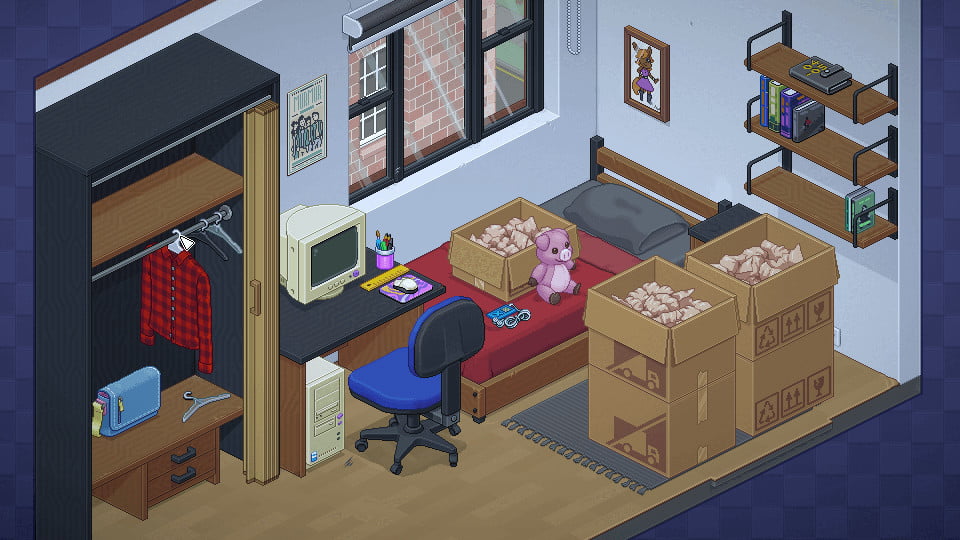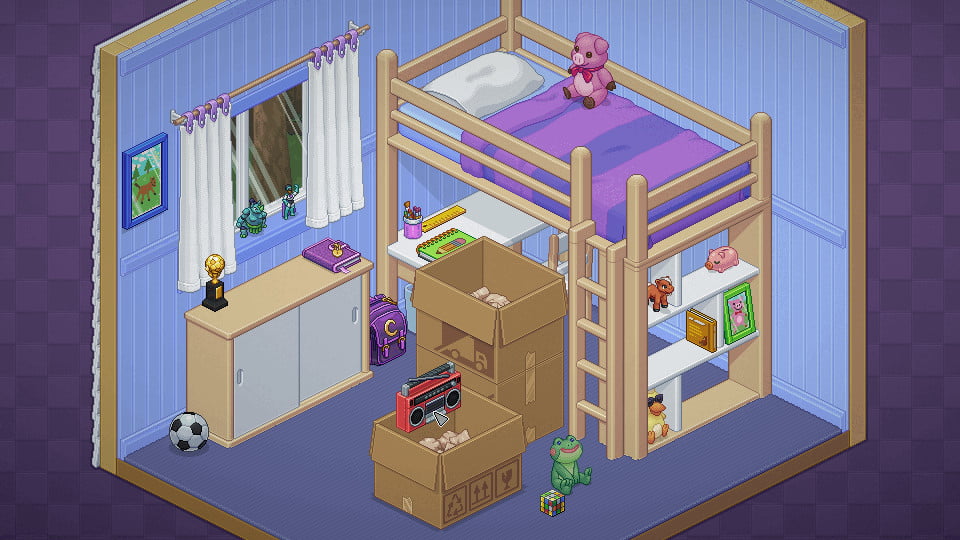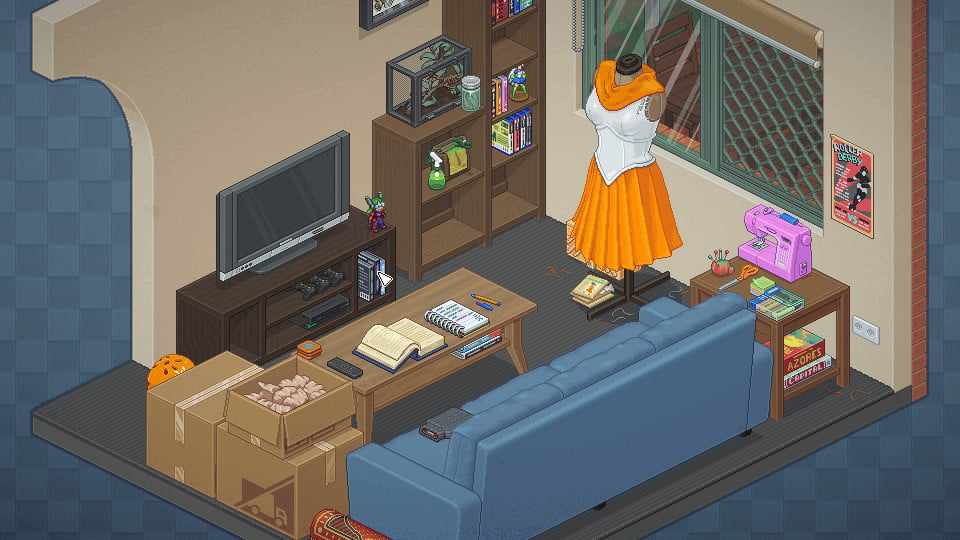Chances are good that you already know about Unpacking. If you’re one of my friends who reads this blog, then you have already played it, probably finished it, probably loved it. It’s clever and it’s innovative and it’s sonorous and it’s beautiful and it’s satisfying and all of those good words and that’s why I don’t really need to talk about this game as a game like I’ve finished it or anything.
I haven’t mind you.

Anyway, lovely, zen, meditative, innovative, creative etcetera, you can get a copy here and honestly, you should think about it because I really enjoyed this game (and I really did, even if I didn’t finish the game), but more than that, I enjoyed the way my friends feel about this game, and I especially enjoy a moment when people playing the game hit that bit in the game, and come to twitter to complain about it. It’s great!
I’m not planning on spoiling anything about the game (unless your standard for ‘spoiler’ is galactically sensitive), but if what you really want is the question ‘did Talen enjoy this game?’ Yeah, I did, but not enough to engage with all of it.

I know I said I wasn’t going to spoil things – and I promise, I’m not, nothing you really need to think of as a spoiler. Like, this game follows the player character through her life and that’s going to involve a relationship to her partners. Okay? Like, if you think that’s a spoiler, then gosh.
An element in all of this – and I am trying to not spoiler anything specific here – is the way this game does something in smoochy media that I see as pretty rare. It specifically shows a complex kind of story in a possibility space that – I just used ‘possibility space’ didn’t I. Good lord. Anyway the thing is, Unpacking includes a narrative about your character’s partners, which let it represent… well,
Look, this game’s protaganist reads as bi to me.
And you may think ‘uh, hey, what else could she be,’ and the answer to your question is you do not know how complicated these things can be. These are not labels for fucking soup cans, this is a complicated melange and I live in a place where things can get very complicated very quickly.
I wrote a long time ago about bisexuality that it’s challenging to represent bisexuality in media because it tends to be treated as on-off-gayness; that is, a bisexual character will often be shown as ‘settling’ on a sexuality and an expression; when they are with a straight partner, they will demonstrate nothing that is not heterosexual, and when they are with a gay partner, they will demonstrate themselves as completely gay. Recently this has changed, but it can be tricky with short-form narratives, or narratives that explore characters over a small amount of time (like a lot of videogames and action movies), to represent a character as being bisexual.
And uhhhh, this game does that.
And that’s cool, and good and also so basic that I’m kind of annoyed that I see it so rarely.

I like this game because it makes a game system out of something people do to make games. It takes an element of the game creation process and then it puts those tools of a game designer in your hands and forces you to think of the process that people go through in these spaces. What items does a character have around them? What are the things that make up their life?
How do you tell the story of a character where you cannot present the character, and you can only present their objects and the places those objects are. That can be, at first extremely challenging to explore, if you’ve never thought about it – it can seem confusing to imagine the way a person’s material choices, their physical property, reflects on them. After all, what does one bottle or another bottle have to say about who a person is?
Well, if the bottle is up on its end in a fridge, it says an entirely different thing than if it’s empty, uncorked, on the floor, and you don’t even need to know what kind of bottle it is to be drawing implications from that already. These are questions that environment designers have to ask all the time, and the low-resolution pixel style of the art and its cardinal directivity — the way everything needs to be oriented one of four ways, rotated 90 degrees at a time — adds an element of limitation to the design too.
And like, this is just how environmental storytelling works. Oh, we like to make fun of it with the on-point graffiti of people writing ZOMBIES ARE BAD on walls and whatnot, but this kind of thing, of how you design a person’s space, how that person thinks they should interact with that space, all are part of how you convey the story of who that person is and their life.
It’s interesting, and it’s cool and I honestly wonder – hopefully so – if it’s a game structure that can be expanded on. Obviously you wouldn’t get as zen or chill a game as this if you were say, decorating space stations, but the basic task of do environment design, then see if a player can reconstruct that is really legitimately interesting. There’s even other fictions you can work with – psychic detectives, ghosts, crime scene reconstruction, even a creator god trying to ensure the world is properly ‘ordered’ before they start the ball spinning.
This game makes you think like an environmental designer has to think.